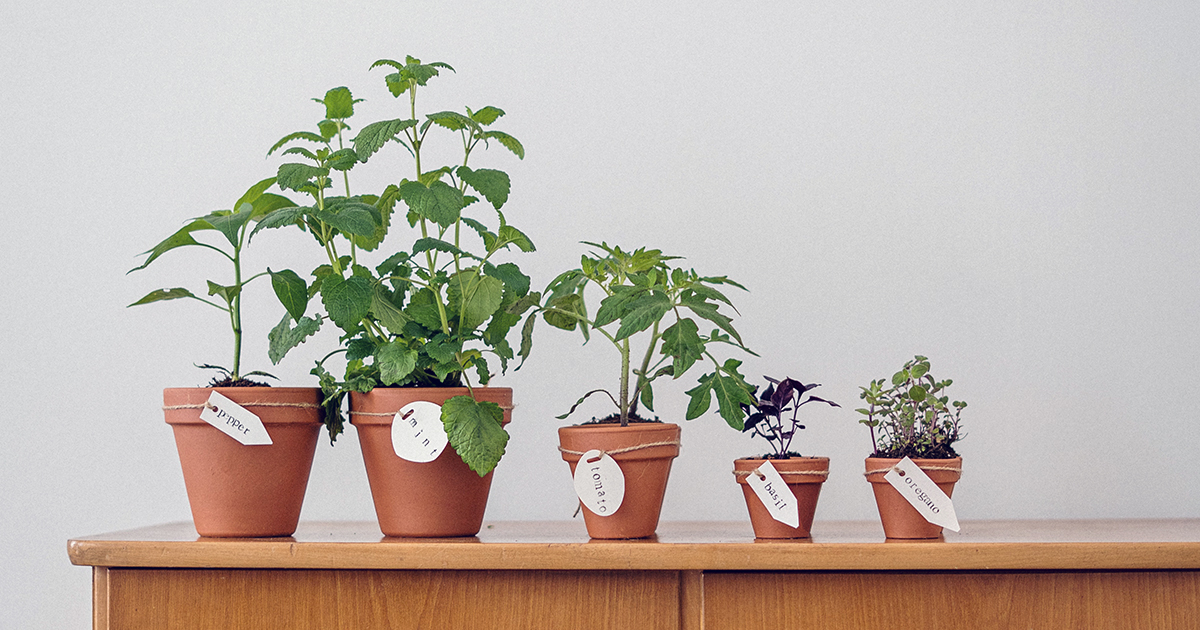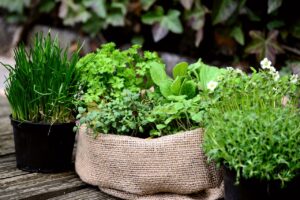
Growing and using herbs is really quite easy and beneficial in so many ways. Herbs add a visual charm, offer wonderful fragrances, kick up your cuisine a few notches, and even have many health benefits. If you’re used to buying small packets of herbs in the grocery store, then you will be amazed at the savings that come from growing your own. Plus, homegrown herbs last a lot longer, too.
Great news for us! The raised beds of our pea patches, as well as the small yard and patio areas in Issaquah Highlands, are perfect for our herb-growing needs.
Most of our favorite herbs are perennial, eliminating the need for annual replanting. These include rosemary, lavender, thyme, oregano, chives, sage, parsley and mint. Basil and cilantro are annual and need to be replanted each year, along with the vegetables or flowers that you enjoy.
 Choose a sunny spot for your herb garden or plant them among your flowers. Alternatively, herbs thrive in pots strategically placed on your sun-soaked patio or deck.
Choose a sunny spot for your herb garden or plant them among your flowers. Alternatively, herbs thrive in pots strategically placed on your sun-soaked patio or deck.
Following the planting calendar from the Old Farmer’s Almanac for Issaquah, I typically transplant seedlings in spring to establish new plants. As suggested by the WSU Extension, an effective approach for growing herbs from seeds involves planting certain varieties in pots positioned near a south-facing window or beneath fluorescent lights. Many herbs can also be seeded directly into your garden; simply follow the directions on the seed packet.
A tip on planting mint—It spreads throughout your garden by sending rhizomes or runners just under the soil surface. This herb can take over your garden, so I always confine my mint to a pot. There are so many types of tasty mint and it looks great combined with annual flowers on the deck.
When choosing a spot to plant, I like to envision a Mediterranean hillside. Herbs generally enjoy about six hours of sunlight each day. Adequate drainage can be achieved through raised beds, a well-chosen garden space, or rocks at the bottom of pots.
Herbs really need minimal maintenance. Make sure to water around the roots two or three times a week in the mornings. Harvest your herbs in the morning, after the dew has dried. Use sharp clippers to snip the leaves just above a leaf nodule on the stems.
Chives and parsley should be cut close to the soil surface, while thyme and rosemary stems can be pruned according to your desired plant shape. Regular harvesting and trimming will promote continuous production and fuller growth.
To preserve the flavor and prevent blossoming, be sure to pinch off buds from the plants. Once the herbs start to bloom, their energy shifts to the flowers and results in diminished flavor in the leaves.
Your herbs will produce for you all summer long. Basil will quit when the wind gets cold, so grab those last leaves before the forecast of a frost. Chives don’t last much longer. But in a good year, you will still have sage, thyme and rosemary fresh from the garden for your Thanksgiving dinner.
If you want to save a particularly good harvest, you can dry the herbs by hanging them upside down and freezing them in plastic bags or containers. Consider making jars of pesto or chimichurri for freezing or refrigerating.
As you savor the flavors of freshly harvested herbs in your hearty winter soups and stews, let their fragrances transport you back to your scented garden and start making plans for next year’s herbs!
Marion Boike is a Huckleberry Circle resident and Sunset Walk garden ambassador.





